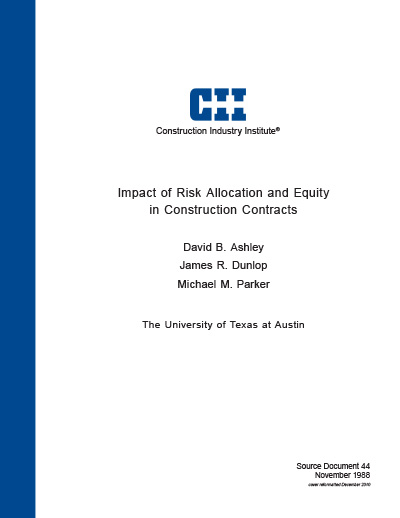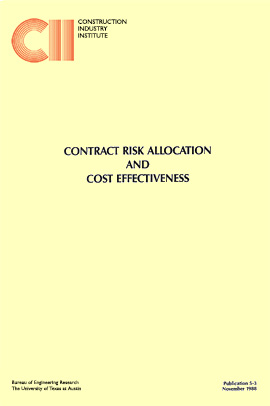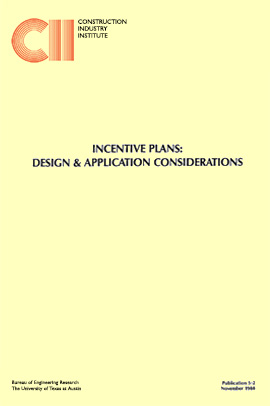
An Analysis of Construction Contract Change Clauses, Volume I
Change can bring to mind the worst images of a construction project. Cost overruns, mismanaged jobs, low productivity, unexpected subsurface conditions, and litigation have all at one time been associated with change. Most construction professionals agree that change is an inevitable aspect of the construction process and may have beneficial effects if handled properly. Change clauses provide a contractual method by which the two contracting parties can deal with these variations from the expected.
Many different clauses have been written to account for various types of change. For example, clauses covering, changed conditions, design modifications, quality variations, and force majeure all in one way or another allow for and manage change. Factors influencing or causing change include (Levin, Claims, and Changes):
- Design changes
- Design omissions
- Extra work
- Improved technology and materials
- Unforeseen conditions
- Force majeure
- Government regulation changes
- Unavoidable time delays
- Schedule revisions
- Defective materials
- Work interruptions or stoppages
- Impact of work by others
- Acceleration of work
- Late deliveries of material or equipment
- Failure to make timely decisions
- Owner or contractor interference
Such a list of possible events can make a contractor very nervous. A sophisticated owner will recognize the consequence of forcing all these risks onto the contractor without some method of relief.
The major objectives of any change clause are cost control and flexibility. These objectives are achieved by providing a contractual method for dealing with an event that was not made part of the original contract. By effectively reducing the contractor’s risk, such clauses may lower construction costs by minimizing contractor contingency. Quality variations in either the plant or resultant product can be corrected, protecting the project owner from unnecessary loss. The flexibility provided through procedures allowing contract modification is an important element of a contract.



